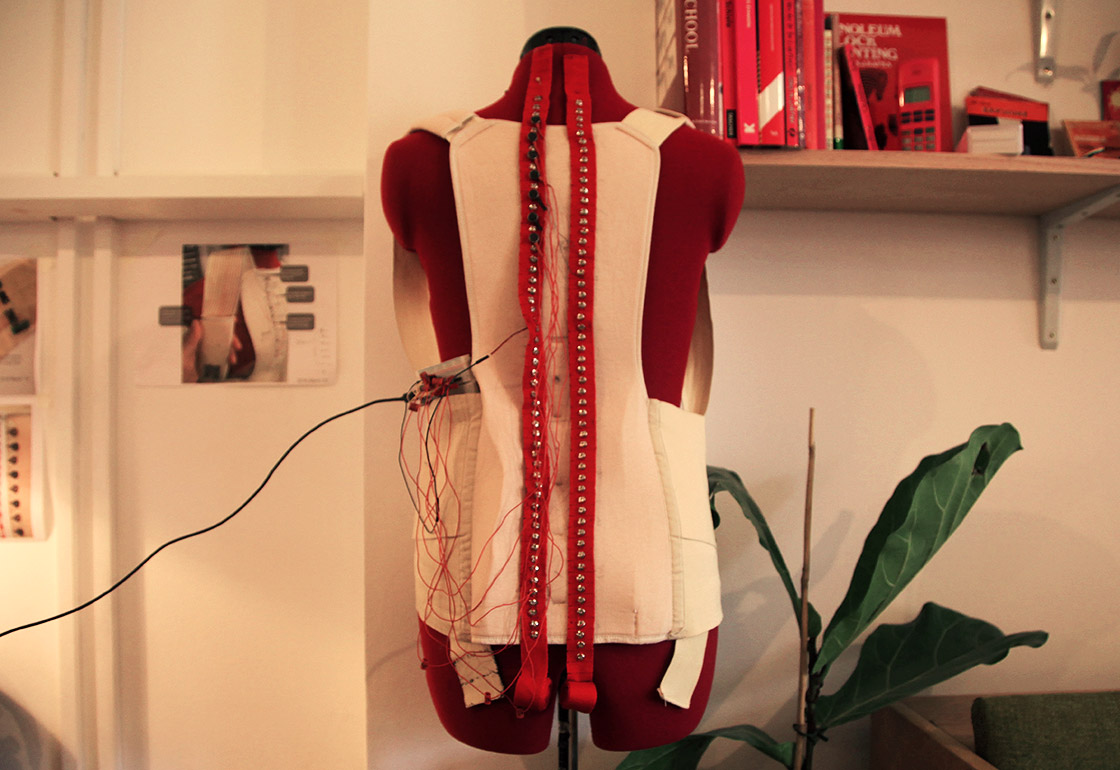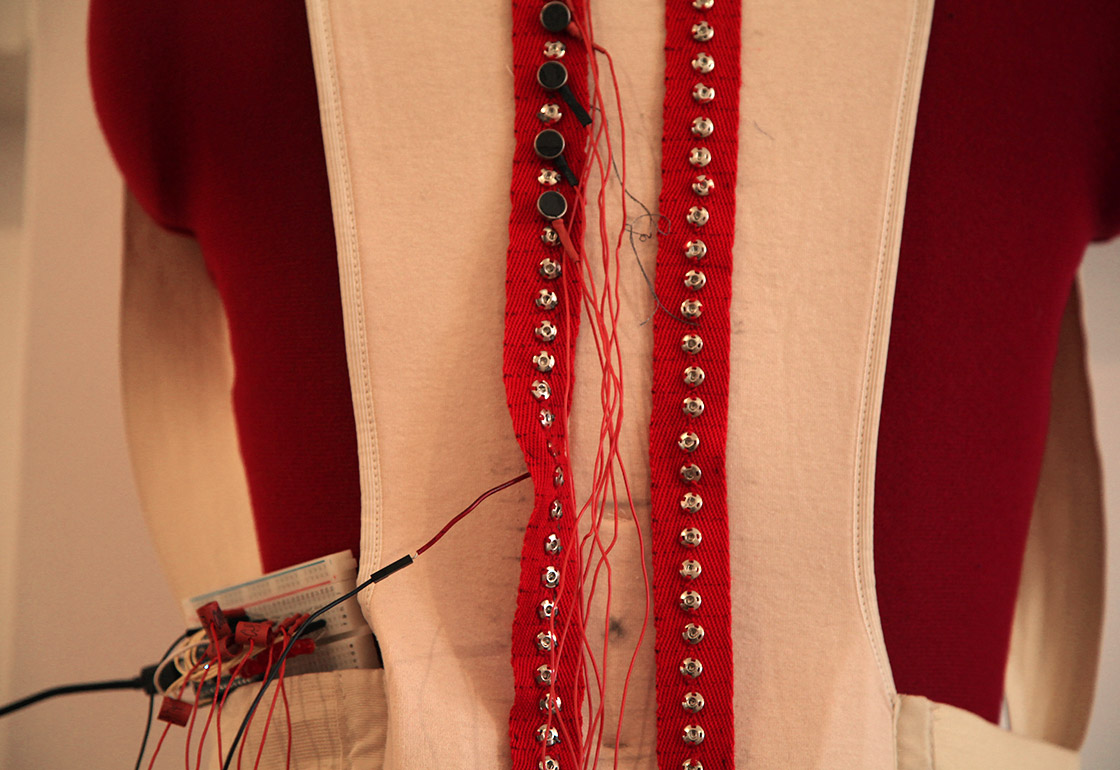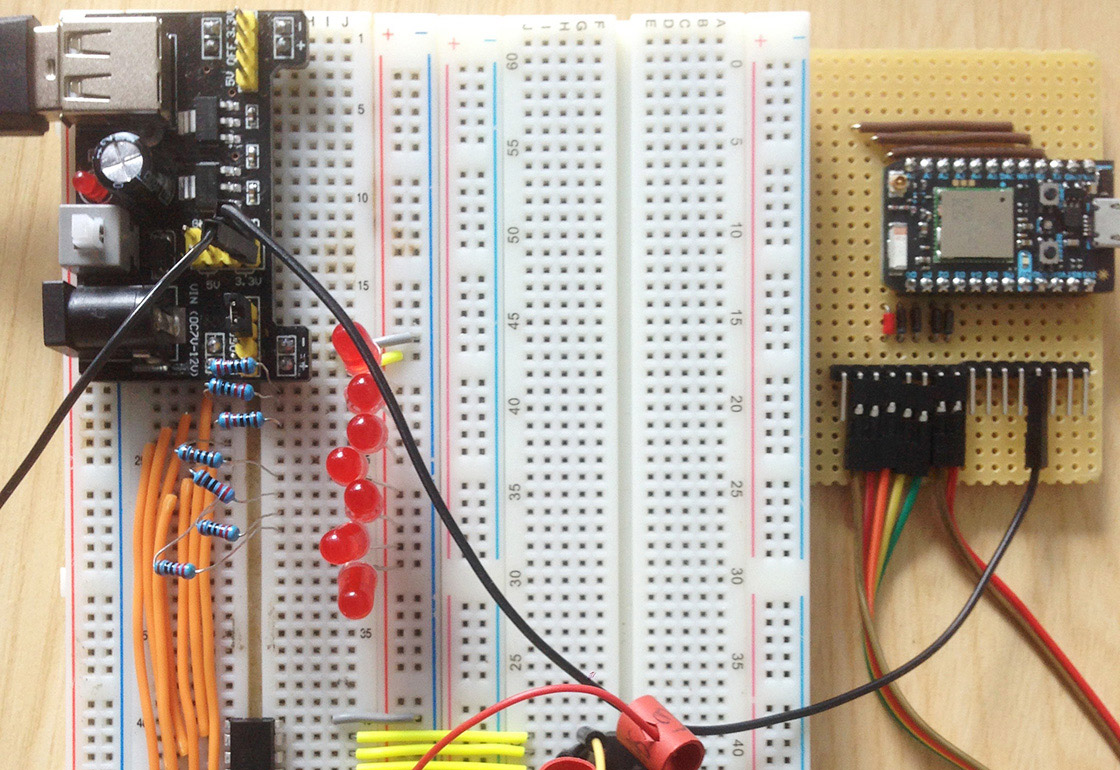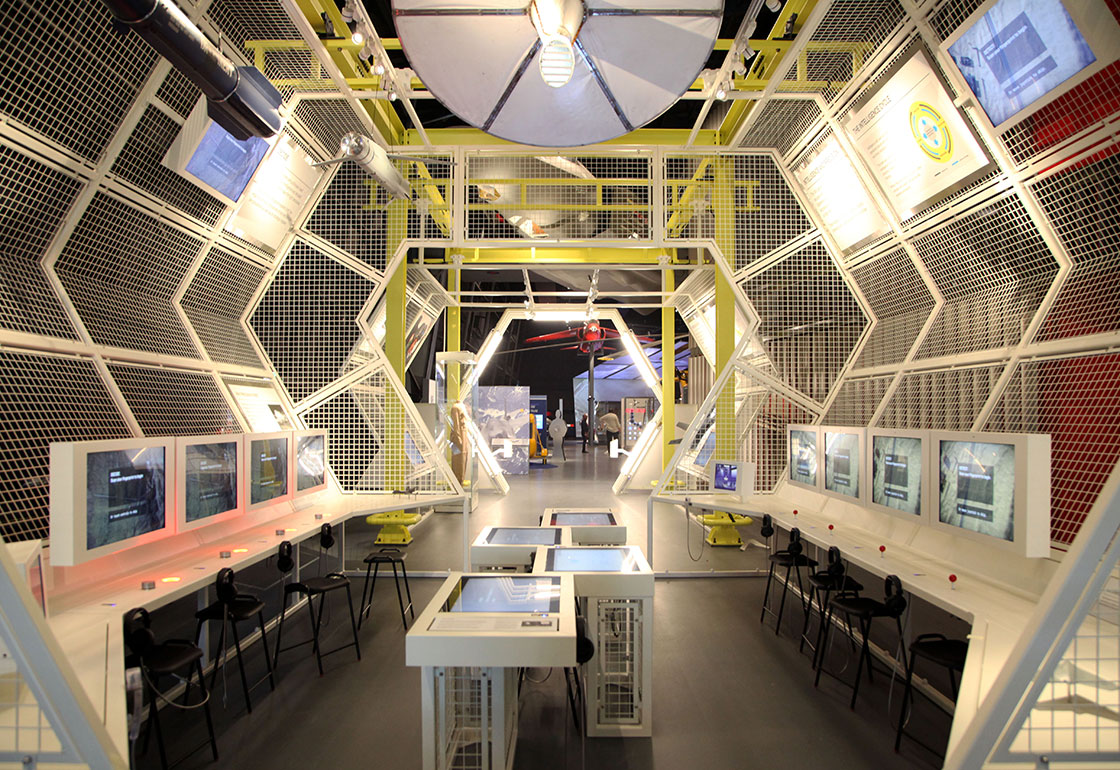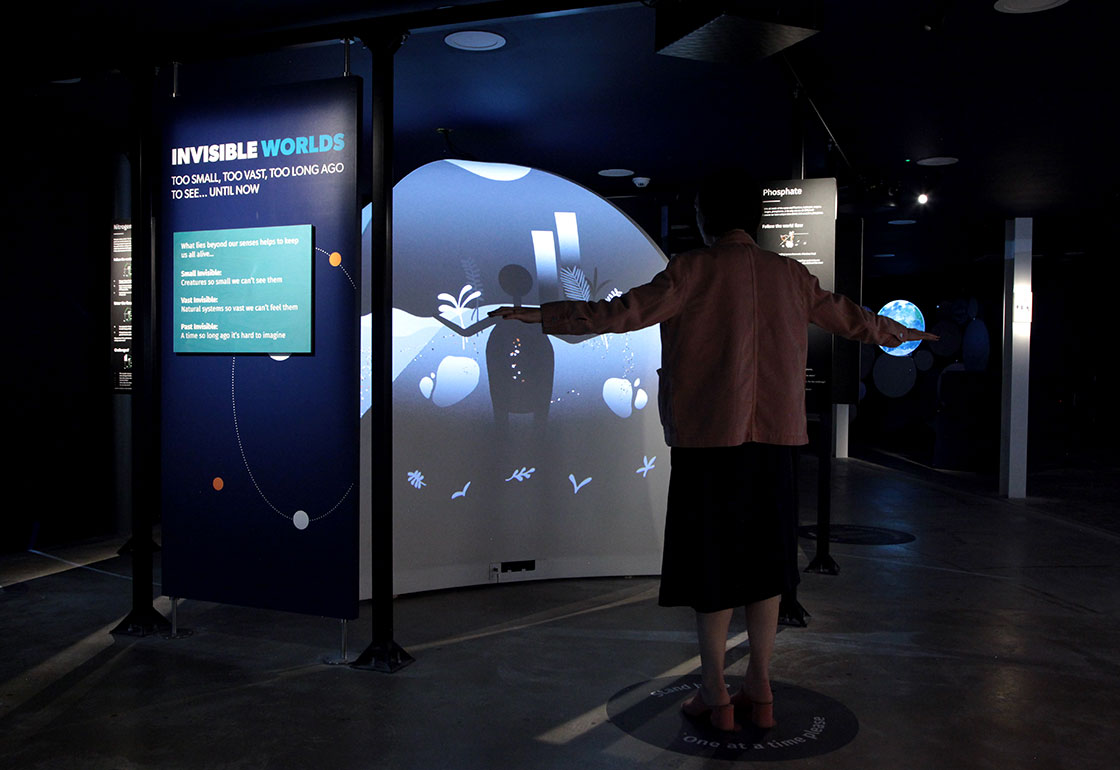Haplós – CogNovo
Introduction
As an industry partner of the CogNovo programme, Kin has had two PhD candidates on secondment in the studio looking at creativity, cognition, and the brain. Diego Maranan explains his work on embodied cognition on and where it joins up with design.
The Project
As a former dance artist, I’m fascinated with how body awareness can help people move, feel, and think with ease, grace, and a sense of wholeness. For instance, at one point during the course of my dance training, I became reacquainted with my shoulder blades and the muscles that move them. That discovery led me to experiencing confidence, presence, and power like never before. I also have a background in computing science, so I’ve been interested in how wearable and interactive technologies can enhance our capacity for body awareness. This is the focus of my project at CogNovo, the multidisciplinary research group of which I’m part and with whom Kin has partnered.
While at Kin, I developed and prototyped Haplós, a torso-length piece of wearable technology composed of a series of small vibratory motors that run up and down either side of the user’s spine. The motors are controlled by a Particle Photon board and embedded in a modified back support garment normally used as a medical device. The motors can be controlled individually (so that distinct patterns of tactile stimuli can be created and potentially recorded for playback) and over the cloud (which opens up possibilities for remote interaction).
Haplós is largely inspired by practices for body awareness such as the Feldenkrais Method®, an educational method which typically involves low-intensity movement and touch while attending to one’s experience in a structured way and with a specific quality of attention (Feldenkrais, 1990). Haplós also builds on existing research in enhancing body awareness through digital technologies (Höök et al., 2015; Schiphorst, 2008) and clothing (Dean, 2014).
Since finishing my secondment at Kin, I’ve taken Haplós to Hack the Brain – a European Union-funded hackathon in Amsterdam – where it played an important role in a hack that I collaboratively designed with an amazing team. The hack, called Bisensorial, was a speculative but functional proof-of-concept prototype where tactile and auditory stimuli is used in conjunction with an EEG sensor to calm or excite users. I’m chuffed to say that Bisensorial placed first among 11 other hacks that weekend on the basis of its artistic value, scientific merit, and commercial potential.
My secondment at Kin inspired me to explore design directions that now clearly relate to my overall research goals. I was among fellow makers, surrounded by a material and cultural environment that open possibilities but also focus and refine the creative process. They shared the joy I have both for small discoveries – as when I realised that a snap fastener can double as a switch for an electric circuit – and for the bigger questions around how built environments and artefacts shape human identity and experience.
CogNovo is funded by the Marie Curie Initial Training Network FP7-PEOPLE-2013-ITN, grant number 604764.
